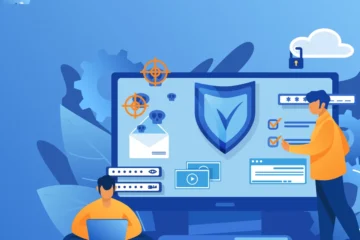In today’s digital landscape, where data breaches and unauthorized access pose significant threats, organizations are navigating complex challenges to secure their sensitive information. Identity Governance and Administration (IGA) emerges as a cornerstone solution, streamlining security protocols while ensuring operational efficiency.
Understanding Identity Governance and Administration (IGA)
IGA encompasses strategies, processes, and technologies aimed at managing digital identities within an organization. It centralizes identity-related tasks such as provisioning, de-provisioning, access management, and compliance to maintain a secure and compliant environment.
Key Components of IGA
Identity Lifecycle Management: IGA oversees the entire lifecycle of digital identities, from onboarding to offboarding, ensuring that access rights align with job roles and responsibilities.
Access Governance: It involves defining, managing, and auditing access rights, ensuring that users have appropriate permissions based on their roles, reducing the risk of unauthorized access.
Compliance Management: IGA ensures adherence to regulatory requirements by regularly reviewing access controls, permissions, and user activities to mitigate compliance risks.
Role-Based Access Control (RBAC): Implementing RBAC helps assign access rights based on predefined roles, reducing administrative overhead and improving security.
The Benefits of Implementing IGA
Enhanced Security: IGA provides a holistic view of user access, minimizing the risk of data breaches and insider threats by enforcing strict access controls.
Operational Efficiency: Automation of identity-related processes streamlines workflows, reducing administrative burdens and ensuring swift onboarding and offboarding.
Regulatory Compliance: Meeting compliance standards becomes more manageable with IGA, enabling organizations to demonstrate adherence to regulations.
Risk Mitigation: IGA enables proactive identification and mitigation of security risks associated with unauthorized access or excessive privileges.
Implementing IGA Best Practices
Define Clear Policies: Establish comprehensive policies defining user access rights, roles, and responsibilities to ensure consistency and compliance.
Regular Auditing and Monitoring: Continuous monitoring and periodic audits help identify discrepancies or anomalies, allowing for timely corrective actions.
Employee Training and Awareness: Educate employees about security protocols, emphasizing the importance of adhering to access policies and procedures.
Scalability and Flexibility: Ensure that the IGA solution can scale with the organization’s growth and adapt to evolving security needs.
Conclusion
In an increasingly interconnected digital world, managing identities and access rights is pivotal for safeguarding organizational assets. Identity Governance and Administration offers a robust framework that not only bolsters security measures but also enhances operational efficiency and regulatory compliance.



